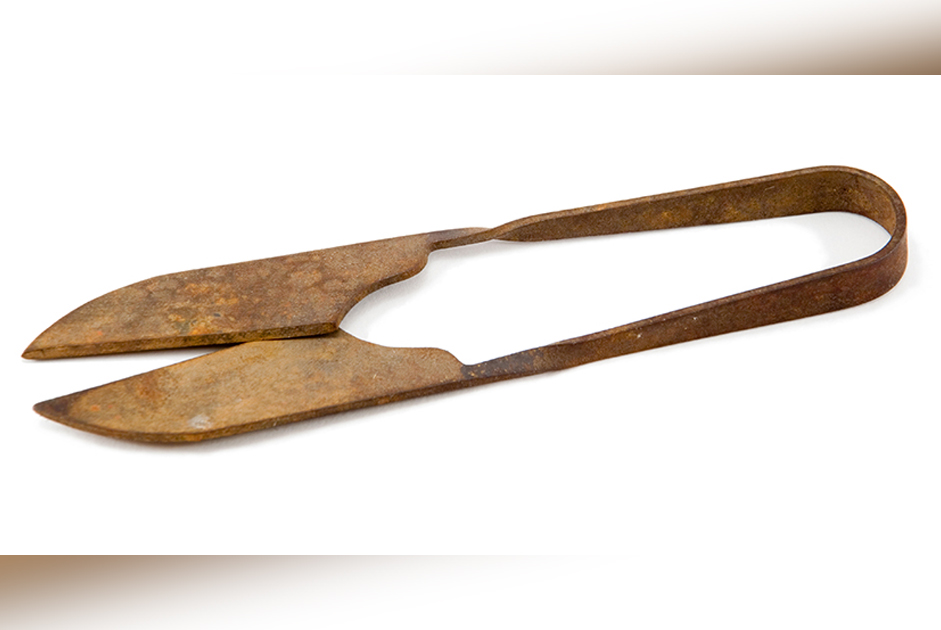It’s easy to overlook the objects that make up our everyday lives. From pencils to pillows, shoes to sugar and Coca-Cola to coffee, so many of the things we use daily have interesting and often surprising origins.
Toothbrushes
Would you believe that early toothbrushes were made with hog hair? According to the American Dental Association, a Chinese emperor patented a brush made of stiff, coarse hog hair set into a handle made of bone or bamboo in the 15th century. Hog or horsehair toothbrushes continued to be used for hundreds of years. The modern toothbrush as we know it was invented by a team at DuPont in 1935 and showcased the world’s first fully synthetic fiber – nylon. At first, it wasn’t a big seller since early nylon was stiff and abrasive, and brushing one’s teeth still wasn’t considered a daily necessity. However, by the end of World War II, Americans were influenced by the hygiene habits of returning soldiers, and by the time DuPont introduced softer bristles in 1950, a booming industry was born.
Pencils
In the time of the Roman Empire, documents were transcribed on papyrus with a lead metal rod called a stylus. Later, in the 16th century, graphite was used for writing. Graphite is so fragile that it requires a holder, often fashioned from wood, creating the first pencil. Pencils as we know them today were mass produced in the mid to late-17th century in Germany by the Faber-Castel Company. The US pencil business started booming in the 19th century. It was also around this time that pencils began to be painted. Before this, pencilmakers would leave their pencils unpainted to show the natural wood. But, starting in the 19th century, Chinese graphite gained a reputation as the best in the world. In Chinese culture, yellow is associated with royalty and regal qualities, and therefore, yellow became the standard color of pencils around the world.
High Heels
Did you know that the high heel was originally invented for function and not fashion? The streets of medieval England were the dumping ground for everything from dirty water to trash. Horses and other animals walked the streets and their droppings were left wherever they fell. The fear of what you could get on your nice shoes and clothing became the inspiration for the first high heel. This shoe was originally used as an “overshoe.” Instead of being worn all the time, the wearer would slide it over the everyday shoe to elevate the wearer above the sewage on the streets. When the wearer got to their destination, they would remove the overshoe and wear their clean shoes into the building.
Scissors
Scissors have by far the most ancient roots of all the junk in the drawer. The oldest scissors dated to between 3,000 and 4,000 years ago in Mesopotamia. These ancient scissors were a single piece of metal bent so that the two cutting blades were positioned near each other, and the user would press them together. In 1761, Robert Hinchliffe developed a steel-casting method for scissor blades. When they were attached to each other and handles added, they looked nearly identical to the scissors we know today.
Pillows
The phrase, “sleep tight, don’t let the bedbugs bite,” wasn’t commonly used until the 1800s. However, it was still the incentive behind the ancient creation of pillows. The earliest known use of pillows was in Mesopotamia around 7,000 BCE. But, unlike pillows of today, these ancient pillows were not intended to be comfortable, as they were often made of stone! Instead, their main intention was to keep insects from climbing into people’s noses, mouths and ears while they slept on the ground. Later, the Ancient Greeks and Romans focused on making pillows that improved comfort while sleeping. Although, generally only the upper class owned pillows at that time.
Coca-Cola
In the late 1800s, former Confederate colonel John Pemberton began experimenting with a drink that would serve as an alternative to morphine. The inventor developed a crippling addiction to the narcotic as a result of an injury sustained in battle. By 1885, he patented Pemberton’s French Wine Cola nerve tonic – which was inspired by a French coca wine known as Vin Mariani – at his drugstore, Pemberton’s Eagle Drug and Chemical House in Columbus, Georgia. However, the following year, both Atlanta and Fulton County, Georgia passed prohibition legislation, leading Pemberton to develop a non-alcoholic alternative to his wine tonic. Thus, Coca-Cola was born. Pemberton sold the ownership rights to Asa Griggs Candler, a businessman, whose marketing tactics led Coca-Cola to its dominance of the global soft drink market throughout the 20th and 21st centuries.
Forks
While the ancient Greeks wielded large, two-pronged tools to carve and serve meat, seventh-century Middle Eastern rulers were the first to bring a fork to their mouths. Around the 11th century, the first fork reached a Venetian table in the hand of a Byzantine princess, to the horror of local priests, who maintained that God had invented fingers for eating. It took more than 500 years for Italians to adopt the utensil, which begs the question – how was pasta twirled before the fork?
Kleenex
Do you ask for a tissue or a Kleenex? The disposable tissue dates indirectly back to World War I, when the company Kimberly-Clark created a type of crepe paper for use as a filter in gas masks. They had also been working on developing a new product that would turn into Kotex, the feminine hygiene product line. The company kept the “EX” ending from Kotex when they modified it, making it softer and thinner, and sold it as Kleenex. Originally it was meant to remove cold cream and makeup. A few years after Kleenex came to market and due to public demand, Kimberly-Clark started marketing Kleenex as a disposable handkerchief…and the rest is history.
Coffee
As far back as 1000 AD, Ethiopians chewed the seeds and berries of the coffee plant for its stimulant effects. Nearby Yemen was the first to cultivate and roast the beans for brewing as Sufi mystics there used it to enhance their spiritual experiences. Coffee was shipped throughout the Arab world from the Yemeni port of Mocha and made its way to Europe in the 17th century.



















